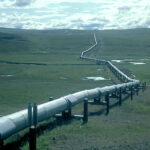New Federal Pipeline Safety Measures Could Have Big Impact on Industry

On May 14, 2014, the federal government announced proposed new measures designed to enhance Canada’s pipeline safety system. Among other things, the measures expand the powers of the National Energy Board (NEB). For companies involved in this industry sector and who operate NEB-regulated pipelines, the new measures may have serious implications, especially if there should be a leak or other environmental incident involving a pipeline. Here’s an overview of the key components of the new measures. (Note: The federal government must make changes to the relevant laws and implement related regulations to put these safety measures into effect.)
THE NEW MEASURES
The key components of the new pipeline safety measures focus on the following areas:
Absolute liability. The new measures require companies responsible for major oil pipelines to set aside $1 billion to cover the costs and damages from a major pipeline rupture’irrespective of fault. In other words, even if the company isn’t responsible for causing the rupture, it’ll still be expected to pay up to $1 billion for the related damage and remediation costs. Such companies will still have unlimited liability under common law for spills or other incidents when they’re at fault or negligent.
Incident response. Under the new measures, the NEB would get authority to assume control of incident response if a company is unable or unwilling to do so, i.e. in exceptional circumstances. In addition, the government would implement a financial backstop to ensure that funds are available to the NEB for spill cleanup in such cases.
Cleanup costs. The NEB would also get authority to order reimbursement of any cleanup costs incurred by governments, communities or individuals.
Insider Says: The proposed federal pipeline safety measures will also address ways to increase Aboriginal participation in pipeline safety operations and give the NEB the ability to provide guidance on the use of the best available technologies used in federally-regulated pipeline projects, including materials, construction methods and emergency response techniques.
ANALYSIS
The key measures spelled out above aren’t so surprising because they’re consistent with the “polluter pays” principle that’s the foundation of Canada’s environmental laws. So these measures aren’t totally out of left field. But they still have serious financial implications for pipeline companies’after all, $1 billion is not a small amount of money to set aside in case of a major pipeline incident. However, some critics claim that these measures don’t go far enough. For example, some want unlimited absolute liability, arguing that the costs related to a major oil spill could easily exceed $1 billion.